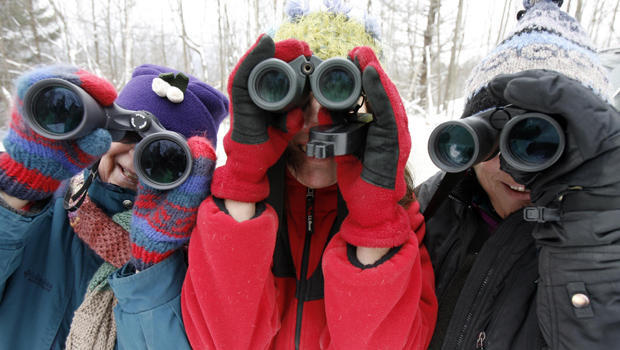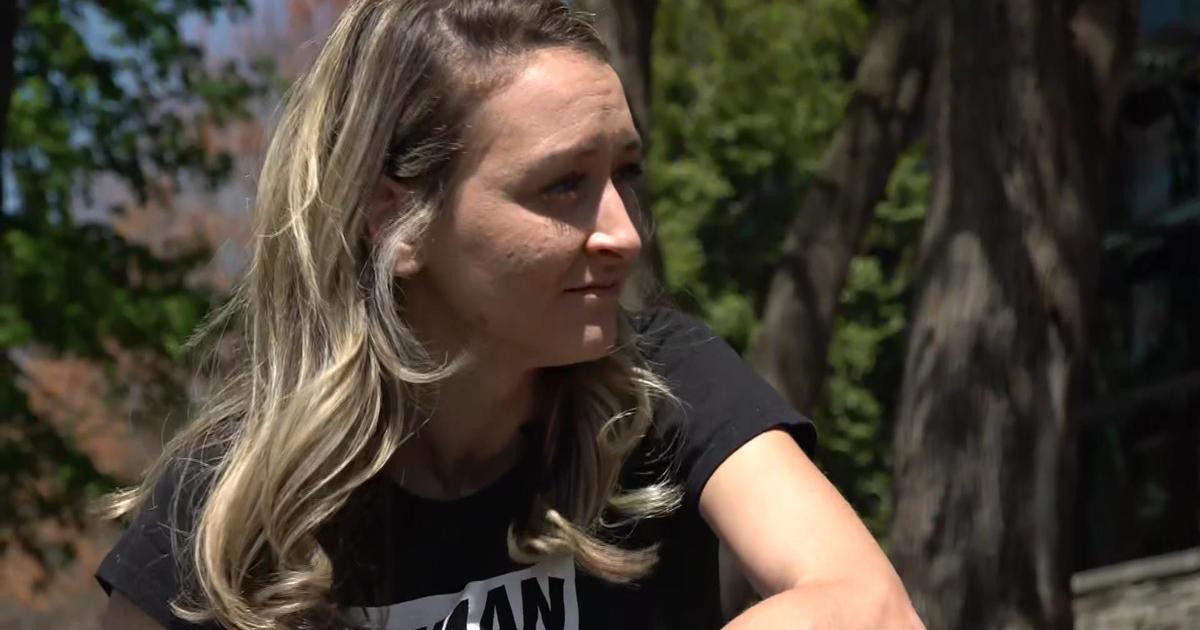Nature up close: The Christmas Bird Count
By "Sunday Morning" contributing videographer Judy Lehmberg.
Wait! Stop! Do you hear that? It's a red-bellied woodpecker! Oh, I hear cedar waxwings, too, and a wood duck!
The sun isn't up yet but my friend Stacey is already adding species. As she calls them out, I make check marks on our official list. Since it is early in the morning, birds are just beginning to wake up and call to find their relatives and friends.
As it gets a little brighter we start to see them: a male northern cardinal chasing a female; a dozen American goldfinches searching for seeds along the road edge; a couple of Carolina chickadees hanging from sweetgum balls as they skillfully extract seeds.
We try to listen and look in all directions as things happen quickly this time of day. We don't want to miss anything. We're trying see as many birds as possible as we move along a road just north of Interstate 10. It is cold for southeast Texas, 25 degrees, with a little wind making it feel colder. We are bundled up in long underwear, several pairs of socks, lots of layers. We are in for a long day of bird identification and we couldn't be happier.
I participated in my first National Audubon Society Christmas Bird Count (CBC) in 1975, 75 years after the first one in 1900.
In the late 1800s and early 1900s, people held "side hunts" where two groups of hunters went out and killed as many birds as they could. At the end of the day the group with the biggest pile of dead birds won. Frank Chapman, an ornithologist and officer in the newly-formed Audubon Society, organized 25 bird counts in the U.S. and Canada that year. He did this as an alternative to the side hunts, to draw attention to declining bird populations. Armed with binoculars rather than shotguns, 27 individuals participated in that first 1900 bird count. The top count that year was in Pacific Grove, California, with 36 species, while Chapman's New Jersey group spotted only 18 species.
This was the 118th year of the CBC. Those 27 participants in 1900 have grown to over 76,000 volunteers last year. The count has spread to much of Canada, Latin America, the Caribbean, Bermuda, and the Pacific Islands. Each group counts birds in a 15-mile-diameter circle. The circles are divided up by group organizers so each area within the circle is only counted one time. The counts can take place on any day between December 14 and January 5. Last year, there were 2,505 circles covered.
The data accumulated from these counts is now online at Audubon's website (netapp.audubon.org/cbcobservation).
After a long day of counting, Stacey and I arrive after sunset at a Mexican restaurant for the highlight of the day, a warm restaurant with good food and a chance to visit with all of the other Old River CBC participants. We're here to tally up the results. After a nice dinner David, our group organizer, gets up and starts the count. He calls out bird names, in phylogenetic order: Greater white-fronted goose? Several people reply: Yes! Snow goose? Yes. Ross's goose? No. It continues.
We aren't the biggest group, with maybe 25 participants. We normally get around 150 species. We spend time catching up with each other, as we only meet once a year, and then go home to an early bedtime.
The CBC is the longest-running community science project in the nation and has been used to track the changes in bird populations by scientists, has been cited in hundreds of scientific articles, and is used by U.S. federal agencies to make decisions about birds.
Before the Internet, the data was published in a book mailed to all the participants. Some of it can be rather dry reading, but for a bird fanatic like me it is pretty interesting. I remember one entry from almost 40 years ago from a location in Alaska. They went out at sunrise, around 11:30 a.m. It was -23 F. They stayed out until sunset, around 2:00 p.m., and saw zero birds. Contrast that with the Matagorda County-Mad Island Marsh, Texas 2015-2016 total of 239 bird species, the highest count in the U.S. most years. Make no mistake, these guys are competitive!
But the Matagorda total doesn't stand up so well to the Yanayacu, Ecuador total of 509 species.
The highest North American species counts are usually along the Texas Gulf Coast. In fact, the highest 20 counts are all in Texas and California. Both areas have high species diversity, as well as some very proficient -- and competitive -- birders.
- Want to join next year's Christmas Bird Count? Visit the National Audubon Society website.
Judy Lehmberg is a former college biology teacher who now shoots nature videos.
For more info:
- Judy Lehmberg (Official site)
- Judy Lehmberg's YouTube Channel
To watch extended "Sunday Morning" Nature videos click here!




